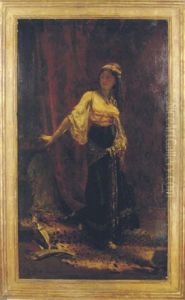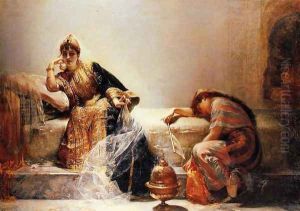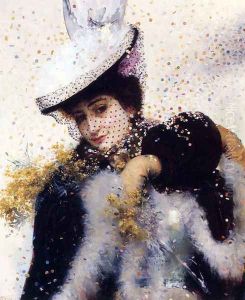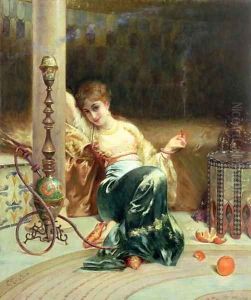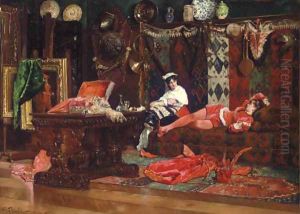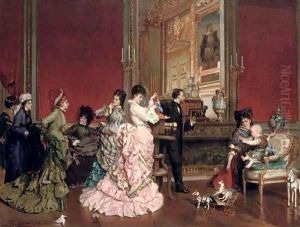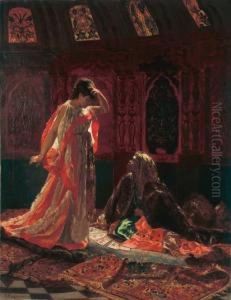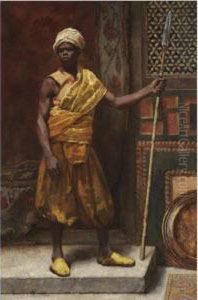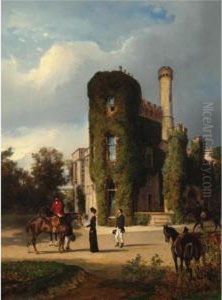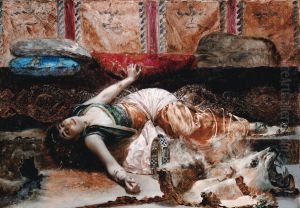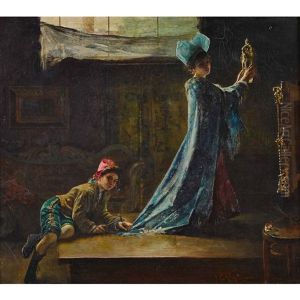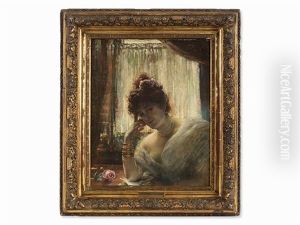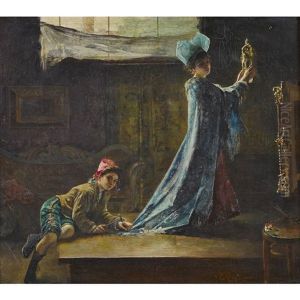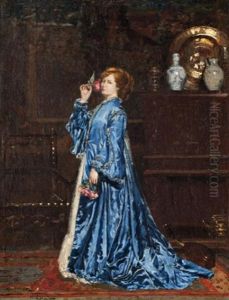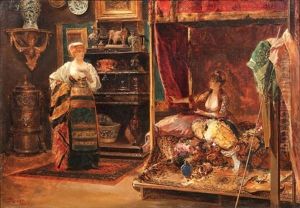Edouard Frederic Wilhelm Richter Paintings
Edouard Frederic Wilhelm Richter was a distinguished 19th-century artist known for his genre painting, portraits, and Orientalist works. He was born on April 18, 1844, in Paris to a French mother and a German father. His multicultural background influenced his artistic style, which combined elements of both French and German art traditions.
Richter showed an early interest in art and was trained at the prestigious École des Beaux-Arts in Paris. He was a student of renowned artists such as Charles Gleyre and Jean-Léon Gérôme, who were instrumental in shaping his technique and artistic vision. Richter's education and training under such masters allowed him to develop a refined academic painting style, which was popular during his time.
Throughout his career, Richter contributed to various Paris Salons, where his works received recognition and accolades. His genre paintings often depicted scenes of everyday life, imbued with a sense of romanticism and meticulous attention to detail. He became particularly noted for his Orientalist paintings, which reflected the 19th-century European fascination with the Middle East and North Africa. These works were characterized by their rich colors, intricate patterns, and exotic subject matter.
Richter's portraits also garnered attention, with his ability to capture the likeness and character of his sitters. He was adept at portraying the subtle nuances of facial expressions and the play of light on different textures, which brought his subjects to life on the canvas.
Despite his success, Richter's work, like that of many academic artists of his time, fell out of favor with the advent of modernism and the changing tastes of the art world. However, his contributions to 19th-century art have been reassessed in recent years, and his works are now appreciated for their technical skill and historical value.
Edouard Frederic Wilhelm Richter passed away on December 5, 1913. His legacy is preserved in the collections of various museums and in the annals of 19th-century French and Orientalist art history.

